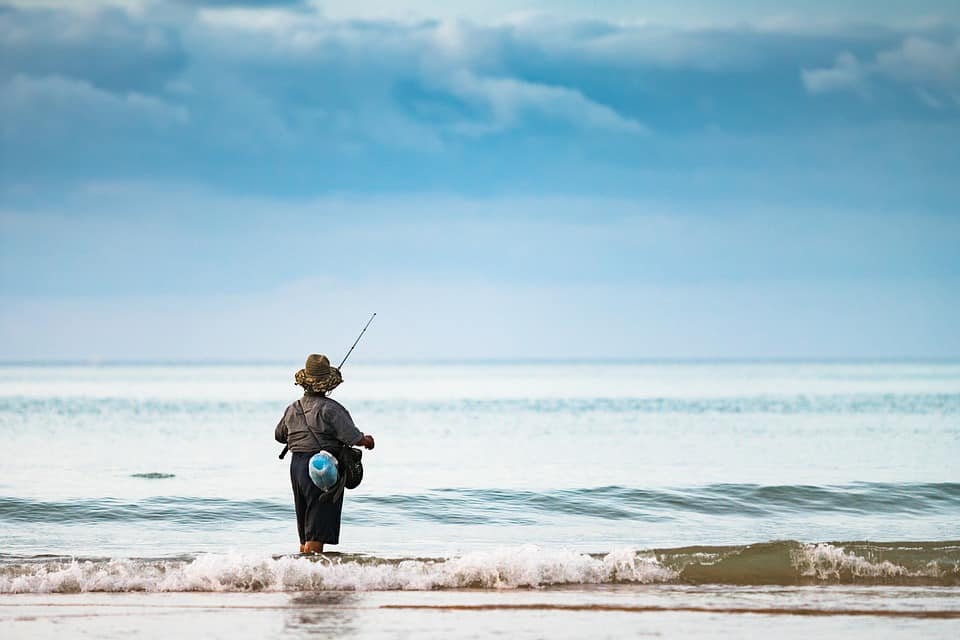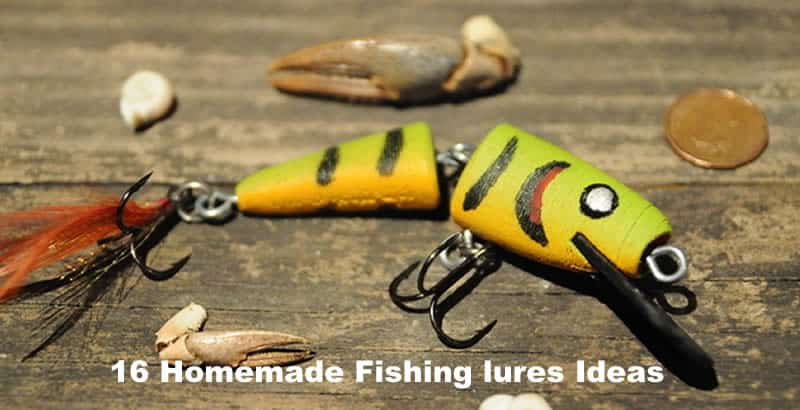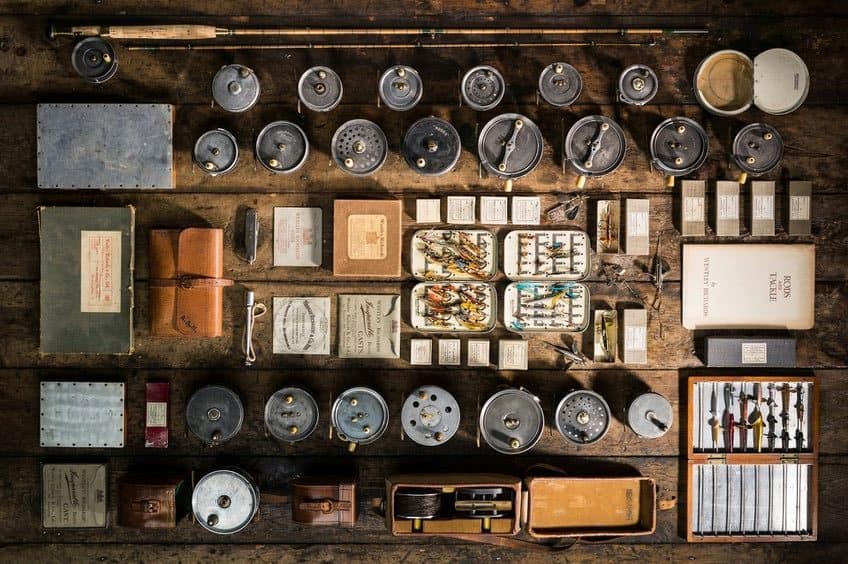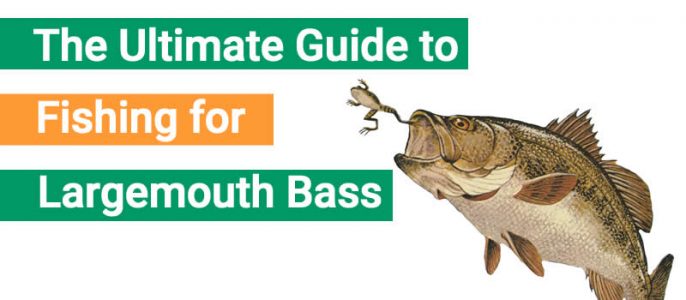If you buy via a link on this page, we may receive a commission, at no extra cost to you.Learn more
For some of us, fishing is more than a sport or a hobby. It is a way to connect with nature and forget, for a moment, our everyday routine.
And what a better way to connect with nature than fishing in a place with a stunning landscape? Lakes have the perfect combination of fish, beautiful views, and fun side-activities, making them an ideal vacation destiny for lone-wolf anglers and families alike.
So, let’s cut to the chase, here you have a selection of the best fishing lakes in the U.S. The beauty of these lakes will keep you distracted while fishing until you feel the sweet tension of the line telling you that a fish is on!
Lake Fork.
In Texas, you will find a handful of options for your next fishing trip. With over 27,000 acres and a maximum depth of 70 feet, lake Fork is fish heaven. Or should we say, an Eden for anglers?
Lake Fork is a place for giants. Here, you can land some massive award-winning fish. This artificial lake currently holds 15 out of 20 state records, including an 80 pounds Flathead Catfish.
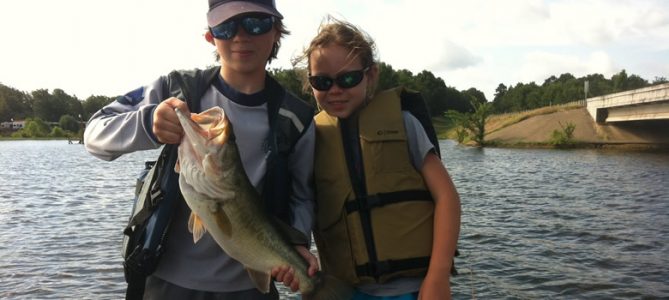
The Bassmaster group awarded Lake Fork with the fifth place of the top 10 best bass fishery sport in the U.S. And, it is the second-best, state-wise, for bass fishing, only bested by Sam Rayburn Reservoir.
The high number of underwater structures, weeds, and standing timber creates a cozy place for fish. There are also artificial fish attractors that you should target while fishing at Lake Fork. Here you can find the GPS coordinates on some of them.
But beware while boating. If you don’t know the waters well, you can end up hitting an obstacle. Therefore, we highly recommend having a map of the lake.
Fish Species.
The most common fishes found in these waters are
- Bass.
- Crappie.
- Channel Catfish.
- Sunfish.
The largemouth Bass is the lake’s attraction. Spring, Fall, and Winter months are the best for hooking this type of fish. The shoreline is their usual spawn site. Thus, we highly recommend targeting this area if you want to hook up some largemouth.
Crappie is also present and in good numbers. You will find them near the dam during Winter, and under bridges and standing timber during Spring.
If you are more a catfish person, heading to the side channels and creeks will be your best bet.
Regulations.
Take a peek here to find the latest, up-to-day fishing regulations that apply for Lake Fork, as well as information about licenses and other permits.
Lake Champlain.
Lake Champlain is a natural freshwater lake located between New York and Vermont. It is so vast that it reaches up to Quebec, Canada.
The lake has an average depth of 65 feet. But it could plunge to 400 feet in some sections. That’s right, enough space to hold some monster fish! Lake Champlain even has its own Loch Ness monster version, the Champ
In these waters, you will find the oldest known fossil reef in the world. That is why many locals believe in the Champ existence. However, there is no proof of this, but this doesn’t mean that you can’t hook up some massive fishes here!
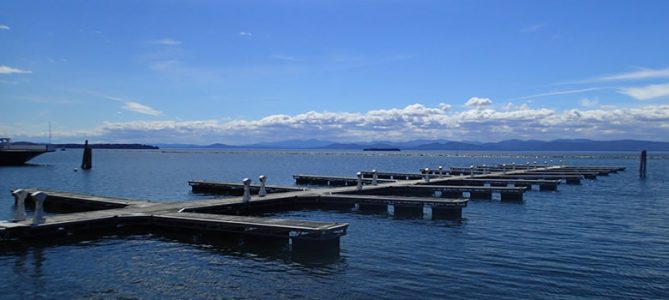
Fishes species.
Over 90 fish species are lurking beneath the waters of this freshwater lake. Among which you will find:
- Lake Trout.
- Atlantic Salmon.
- Bass.
- Bowfin.
According to Bassmaster, Lake Champlain is among the top 100 bass fisheries in the U.S. So, if you want to hook some Bass, you should think about working these waters. This lake has plenty of fishing spots, making it suitable for both beginners and seasoned anglers.
Regulations.
As this lake touches two different states and two different countries, distinct regulations may apply. For example, in Vermont, you have seasons, daily bags, and size limits depending on the fish that you are targeting. Like any other lake, you will need to buy a license to be able to fish these waters.
There are also limitations on the number of lines that you can cast at the same time and the use of gadgets. For instance, according to the New York law, you can’t use fish attractors while fishing in this lake.
Lake Erie.
When talking about great fishing spots, it is impossible not to mention Lake Erie. With its 241 miles long and 57 miles wide, it is the fourth-largest lake in North America. This body of water touches Ohio, Michigan, New York, and Pennsylvania.
Despite being so large, it is the smallest of all the great lakes in terms of volume. As a consequence, the waters of Lake Erie are quite shallow, having an average depth of 62 feet.
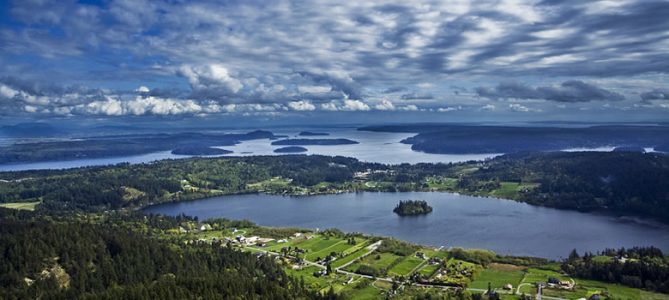
One of the great things about this lake is the variety of hotspots. Weeds, trees, bushes, rocks, and the shoreline make most of the structure found in this freshwater lake. Here is the best place for you to try that new fishing gear, or to add new techniques to your fishing repertoire.
As happened with Lake Champlain, this one also has its legendary monster called the Bessie. Allegedly, a massive sturgeon gave birth to this urban legend, but no one ever caught it.
Fishes Species.
You would expect that a lake so big will hold many different kinds of fish. And let us tell you that; you are right! Some of the most popular fishes found here are:
- Bass.
- Bluegill.
- Catfish.
- Black Crappie.
- Perch.
- Northern Pike.
- Walleye.
- Steelhead.
Walleye and Bass are the most popular fish in this area. The catch of these fishes is seasonal and regulated. Despite it, ice-fishing for Walleye is a popular past-time during Winter. Additionally, the Bassmaster group awarded Lake Erie with a position in its top 10 places to fish for Bass in the U.S.
Regulations.
Like we mentioned before, and like happens in many lakes, fishing activities are highly regulated. These include daily limits, minimum size, and seasons when applicable. For example, you can fish up to 6 Walley per day, and each one of them has to be at least 15 inches long.
You will also need a license from either state to fish in these waters. Here, you can check for prices and conditions to purchase it.
Toledo Bend Reservoir.
This Texan lake is the fifth largest lake in the U.S. With 185,000 acres, Toledo Bend reaches up to Louisiana.
The native aquatic vegetation combined with the standing timber and flooded terrestrial vegetation makes for most of the lake’s structure. But if that natural structure isn’t enough for you, the lake is packed with artificial structure as well. So, let’s cast away.

Fish Species.
Bluegill and Reader Sunfish are present in high numbers in this lake. Therefore, Toledo Bend is a perfect training ground for those new anglers trying to learn the art that fishing is. But here you may also find:
- Bass
- Crappie.
- Catfish.
Toledo Bend is a year-round fishing spot. During the cold weather, the fish are more active and tend to keep in or around shallow water. In contrast, during the hot summer days, fishes try to seek refuge. Therefore, concentrate your efforts on creek channels and around weeds or any other underwater structure.
Spring is a great time to fish for Crappie in this Lake. They usually keep close to the shallows and around vegetation. At any other time, you will find them in deeper water like creek channels.
Regulations.
As always, check the local regulations of the State-side that you are fishing, as they might be different. You can find out which are the Texan-side fishing regulations on the Texan Park and Wildlife website.
You are required to carry a fishing license from either State, even if you are just helping someone to fish. Take a peek to the local department of wildlife to see the up-to-date prices for fishing licenses.
Lake Okeechobee.
Also known as Florida’s inland sea, this 467,200-acre lake is the largest freshwater lake in the State of Florida. The lake is relatively shallow, with an average depth of 9 feet.
But these waters are more than just a fishing ground. Lake Okeechobee offers a wide range of activities for the whole family. You can take a 1300-mile long hike through the Scenic Trail. Or if you prefer, you can take a guided tour and visit the sugar cane fields around the lake.
Lake Okeechobee has many islands and sections covered by weeds. The lake’s layout provides you with a handful of options to cast your rod.
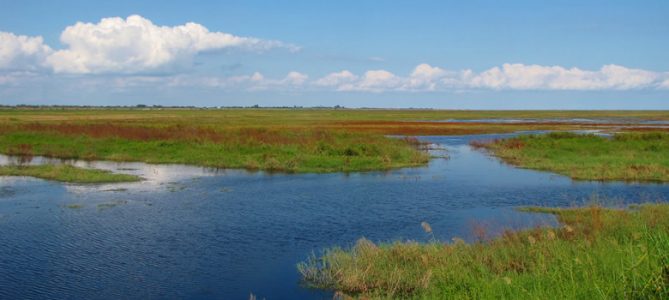
Fish Species.
This body of water is Florida’s Largemouth Bass stronghold. But these aren’t the only fishes that lurk beneath Okeechobee shallow waters. Here you will also find:
- Crappier.
- Bluegill.
- Bass
- Channel and Flathead Catfish.
- Bowfin.
- Gar.
The many canals and creeks are great spots for bass fishing, especially during winter months. We highly recommend casting your rod near the Bella Grande area during cold times.
According to Florida’s Tourist Development Council, this is a year-round fishing spot. Still, they have some recommendations depending on the fish you are targeting. For instance, March and April are the best months to fish for Black Bass here; keep an eye on the shallows!
Regulations.
There is no other way to protect the “Black Bass Capital of the World” rather than with regulations. There are some rules that you must follow to avoid fees while fishing here. The regulatory framework includes daily bags limit, minimum size, and fishing methods. But don’t worry, there are still plenty of margins to quench your thirst for fish.
The local legislation encourages people to practice catch and release fishing. This way, generations to come can still enjoy the thrill of fishing here. But there is no problem with keeping your fish, provided that you aren’t breaking any rules.
To cast your rod in this lake, you must purchase a fishing license. You can check the current price for a freshwater license here.
Lake Michigan.
Part of the Great Lakes system, Lake Michigan is the third-largest by surface. But with its 279 feet average depth, it is the second-largest in terms of volume.
The lake has a beautiful shoreline, full of beaches. But the thriving, and highly populated waters, make Lake Michigan an ideal destination for anglers and tourists alike.
The upper side of the lake is where most of the islands are. They are an excellent choice for those anglers looking to fish from the shore. However, on the creek is where you will find most of the big-game fish.
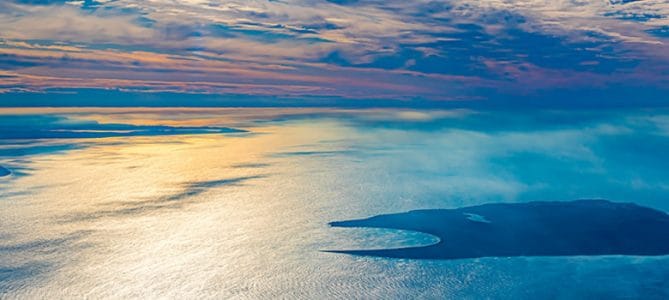
Fish Species.
As is characteristic of the Great Lakes, many different fish species inhabit these waters. Among them, you can find:
- Lake and Brown Trout.
- Chinook Salmon.
- Walleye.
- Smallmouth and Largemouth Bass.
- Yellow perch.
Some of these species, like the Lake Trout and Yellow Perch, are native to these waters. But other fishes, like Walleye and Steelhead, aren’t. The conservation authorities added these fishes to boost the fish population, and prevent sea lampreys from totally depleting trout numbers.
The Michigan Department of Natural Resources usually releases a weekly fishing report. By clicking here, you will know where fishes are biting.
Regulations.
Because four States share this massive lake, different regulations may apply. They are not necessarily the same for the entire lake. For example, if you are fishing from the Indiana-side of the lake, you can’t catch and keep more than 3 Bass fishes. In contrast, you can catch up to 5 when fishing from the Wisconsin side.
Clear Lake.
Just a little warning before beginning, this place is breathtaking. With over 2.5 million years, it is the oldest lake in the U.S. And, according to California’s Department of Fish and Wildlife, Clear Lake is one of the most valuable bioregions in the area.
The lake is relatively shallow, with an average depth of 28 feet. As the name suggests, the water is clear enough to see the bottom in some sections. Therefore, as fish could get easily spooked, you should try to fish as far away from yourself as possible.
Timber, weeds, and rocks make most of the natural structure of this body of water. Usually, big-game fishes stay in or around them.

Fish Species.
Bass is the main attraction of this lake. And most anglers coming here try to lay down on one of these big boys. Still, this ancient lake is the habitat for many other fish species like:
- Catfish.
- Crappie.
- Bluegill.
- Perch.
- Trout.
- Redear Sunfish.
Some of the fishes here, like the Sacramento Perch, are native to these waters. However, other species, like the Brown Trout and White Crappie, aren’t. The local authorities introduced them to boost aquatic life and control certain life forms.
The lake currently holds the fourth position of the Top 10 Best Bass Fishing Lakes in the U.S. Furthermore, according to the same rank, this is the best lake for bass fishing in the western. So, we highly recommend you to visit the lake, especially if you live nearby, or you are a beginner in the angling world.
For those angels who like to fish from the shore, the dock at Lakeport Lagoon is a great spot to cast your rod.
Regulations.
Like we said before, this is a great place for bass fishing. Not only because these waters are thriving with bass, but the regulation is quite flexible as well. Nevertheless, you should take a look at them before your trip.
Mille Lacs Lake.
“Thousand Lakes” is the French translation of the words that give the name to this lake. With over 132,516 acres, this is the second-largest lake in Minnesota.
This beautiful inland lake has an average depth of 42 feet. So, if you want to do some deep-water fishing, you should head to the southern part of the complex.
The two islands close to the center of the lake, offer a perfect starting point for your fishing trip. Apart from that, weeds and rocks make out for the rest of the lake’s underwater structure.
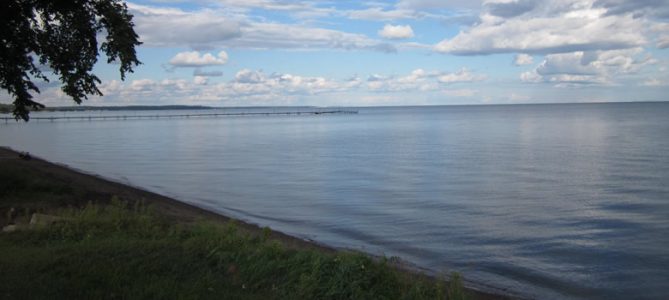
Fishes Spices.
Mille Lacs Lake is commonly referred to as the “Walleye factory” due to its high catch rates. According to the Department of Natural Resources, over 727,000 Walley are lurking beneath the waters. Nonetheless, you can hook other fishes like:
- Smallmouth and Largemouth Bass.
- Northern Pike.
- Muskie.
- Jumbo Perch.
- Tullibee.
Mille Lacs’ waters freeze during winter. The ice is so thick that people can safely fish from it. During these times, most people target Walleye and Northern Pike.
To get more information about fishing hotspots, be sure to check here for an up-to-date fishing report.
Regulations.
In Mille Lacs Lake, season, daily bags, and size regulations change from time to time. Therefore, we suggest you check here for up-to-date information about the subject.
Additionally, some fishes have tags added to their fins. If you happen to catch one, you have to take note of:
- Tag number.
- Length.
- Date and location.
- Species.
This information must reach Lake’s Department of Natural Resources. Regardless if you are harvesting the fish or practicing catch and release.
Sam Rayburn Reservoir.
We were not lying when we told you that you have a wide range of lakes to choose from in Texas. This 144,500-acre lake is entirely contained in Texas soil, and is another perfect place for beginners and experts anglers alike.
Most of the underwater structure of this lake consists of submerged vegetation, flooded terrestrial vegetation, and standing timber. As with the other Texan lakes, this one also has artificial fish attractors. You can check out the coordinates to such structures here.
Fishes Species.
Anglers visit this lake wanting to lay their hand on some Largemouth Bass. But you may also find:
- Catfish.
- Crappie.
- White Bass.
- Sunfish.
The abundance of Redear and Bluegill Sunfish makes them easy to catch. Catfish are also present in high numbers, and they usually are lurking the side channels and creeks.
Colder months enhance fish activity. You can find them in the shallow waters during these times. In contrast, to cope with the Texan sun during summer, you should concentrate your efforts on the deeper parts of the lake.
The Texas Parks and Wildlife Department usually releases a fishing report. By clicking here, you will have access to the latest hotspots.
Regulations.
Only Texan regulations apply to this lake. Here, you can find information about minimum length, daily bags, and harvesting bans. As well as the current price and conditions for the purchase of a license.
Santee Cooper Lakes.
This system comprises two lakes; Lake Marion and Lake Moultrie. Both Lakes were created after the Santee River impoundment.
Lake Marion, also known as South Carolina’s inland sea, is the largest lake in South Carolina, while Lake Moultrie is the third-largest.
Both lakes yield an impressive 160,000-acres area. The waters are full of weed, water plants, flooded trees, and standing timber. That is a lot of structure, which translates into many hiding places for fishes.
There are a handful of options for shore-side anglers along the 450-mile long shoreline. Alternatively, you can charter a boat to reach all the fishing hotspots.
Fishes Species.
Most anglers come to Santee Cooper Lakes, hoping to catch a massive Largemouth Bass. The lake holds the ninth position on the Top 10 Bass fishing Lakes in the U.S. However, there are other, award-winning fishes in these waters, such as:
- White Perch.
- Catfish.
- Walleye.
- Crappie.
- White Bass.
If you are looking for a real fight, you may want to try to hook up some Catfish. Back in 2012, an angler managed to land a 136 pounds Blue Catfish. There are so many Catfish here that hooking a 60 or 70 pounder is not uncommon.
You can also fish Crappies at the shallow sections of the lake, especially those with weeds and underwater structures. These fishes are perfect for new anglers or for those trying to get acquaintance with the land.
By clicking here, you will get an updated fishing report.
Regulations.
The regulations for this lake include daily bags, minimum length, and a game-fish limit per day. For example, you are not allowed to carry more than 60 game-fish per day. Additionally, this limit can’t exceed the individual maximum for any single spice.
Lake Berryessa.
With 27,000 acres, Lake Berryessa is the largest lake in Napa County, California. The Bureau of Reclamation is responsible for managing this artificial lake.
This body of water provides irrigation and power generation to the San Francisco Bay area. Like many other artificial lakes, Lake Berryessa has mechanisms to keep the water levels below the maximum allowable. But this is the only lake that does so in a peculiar way.
Near one of the edges of the complex, you will find a massive hole. The perforation sucks the water surplus when the levels are too high. Looking at it has a hypnotic effect. But don’t worry, there is no possibility of being dragged down the hole. Besides, there is no way of reaching it, as there are signs and obstacles along the way.
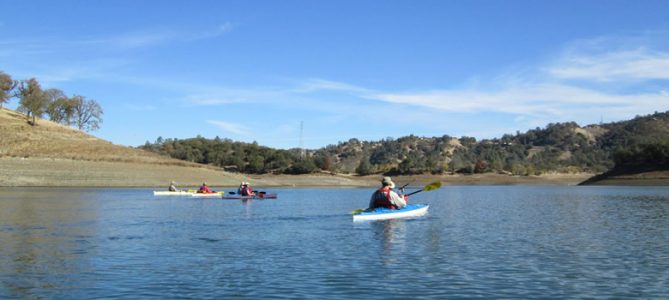
Fishes Spices.
Lake Berryessa is another great place for Bass fishing in California. As Bass spawn during spring, you can catch them near the shallows. During hotter months, these fishes head to deeper waters. Other spices that you can fish here are:
- Catfish.
- Chinook.
- Brown and Rainbow Trout.
- Crappie.
- Bluegill.
Catfish are a year-round catch. As they are more active at night, you should concentrate your efforts on shallow water and after the sunset. Otherwise, you will find them on the deeper sections of the lake, hiding from the sun.
Those looking to fish from the shore could try out to cast their rod in the river inlets. Alternatively, you can take your boat and head up to those sweet spots covered by weeds or shallow coves. Another option is trolling near the dam, especially if you want to catch some Trout.
Regulations.
There are regulations on certain species. Such restrictions include seasonal, daily limits, and minimum length. Here you can find the current set of regulations that apply to Lake Berryessa.
Furthermore, any angler older than 16 must have a license to fish in these waters. Several different permits are available. The price depends on whether or not you are resident and the expiration date. Click here to know which are the current prices of these licenses.
Kentucky Lake.
With an extension of over 50,000 acres, the Kentucky lake is the largest artificial lake in the United States.
This reservoir was filled just after the construction of the Kentucky Dam back in 1944. Flood control and power generation were the main reasons for the dam’s construction.
The lake has a maximum depth of 75 feet. On the shoreline, you will find plenty of bushes and weeds where fish usually hide. So, we highly recommend targeting those spots, especially if you are on the hunt for some crappie.
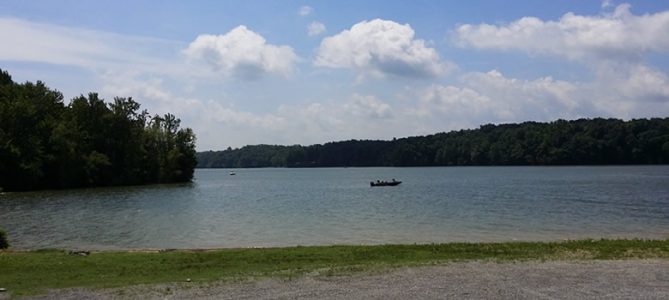
Fish Species.
According to the locals, Kentucky Lake is one of the best spots to fish for crappie. Other types of find that you may find here are:
- Bass:
- Black and White Crappie.
- Bluegill.
- Redear Sunfish.
- Yellow Perch.
- Catfish
As you can see, these waters are thriving with fish! There are over 200 fish spices all around Kentucky. So, there are plenty of opportunities for greenhorns and seasoned anglers alike.
The side channels and creeks are promising options on sunny days. With the appropriate gear, and with some luck, you can catch some big fishes. And who knows? Maybe you find yourself breaking some lake records.
Regulations.
There are daily-bag and minimum size limits for some fishes in this lake. For instance, you can’t catch more than 6 Bass fishes per day, regardless of the type of Bass. Before casting your rod, we advise you to check the current fishing regulations.
You also need a license to fish at this lake. For more information, visit the Kentucky Department of Fish and Wildlife website.
12 Best Fishing Lakes in the U.S.
Well, that wraps up this selection of 12 of the Best Fishing Lakes in the U.S. There is no particular order in this review. It is up to you to decide which lake from this list, or outside it, is the best lake to fish in.
In our case, we love Lake Fork for its impressive award-winning fishes and Lake Champlain for its stunning view of the Adirondack and Green mountains. We also have an honorable mention for Santee Cooper Lakes for their massive Catfish reservoir; it would be amazing to land one of those beasts!
We would love to hear your opinion and stories on the matter. So please, feel free to share them!

